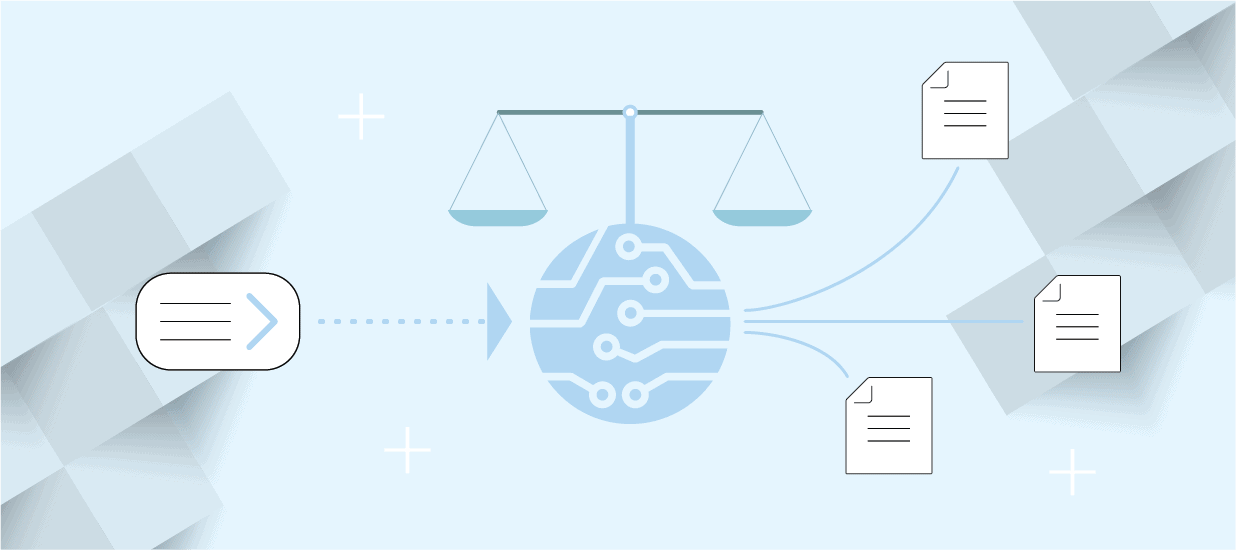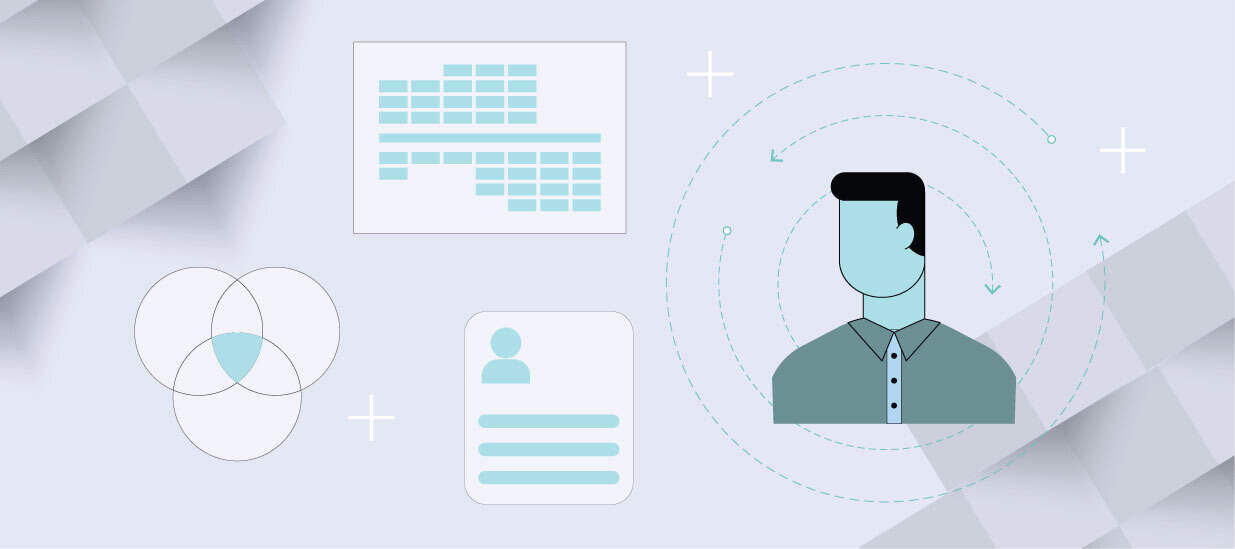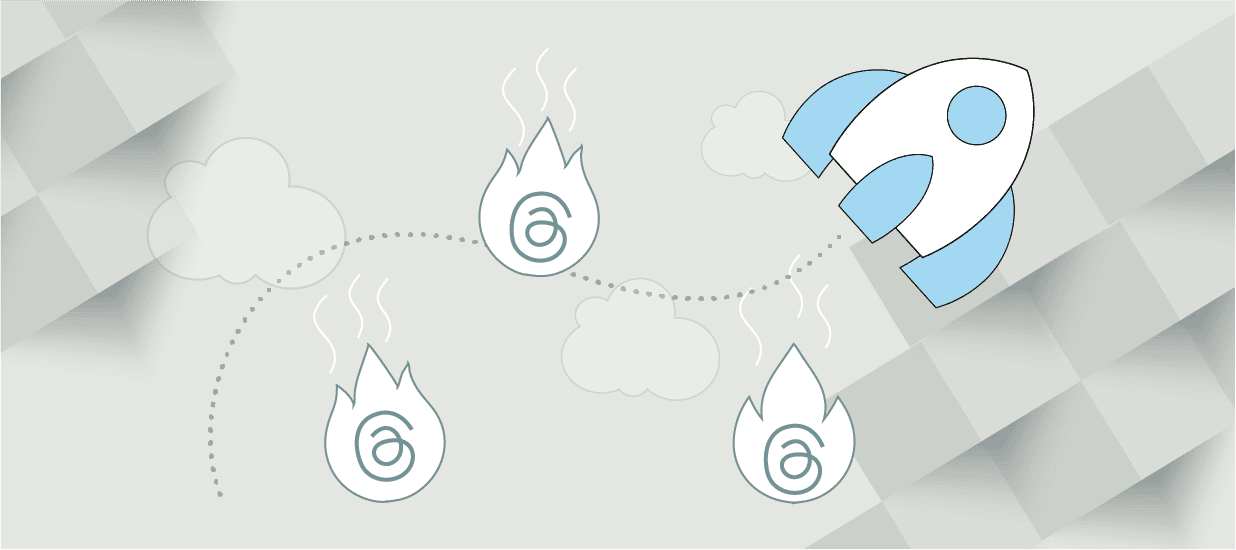How many times have you built a product, only to find out that nobody was interested in the features you painstakingly included? Even when you asked your customers what they wanted beforehand?
Ultimately, it’s not just about talking to your customers that gives you the information you need, it’s about talking to them the right way. Here are 20 tips to help you communicate with your customers better, so you can more efficiently deliver the products they actually want—not just what they say they want.
#1 Have Customers Tell You How It Would Make Their Lives Better
Customer requests are usually just one or two sentences, devoid of context. How can you possibly gauge the urgency of a request without a real conversation?
Which one of these would you place a higher priority on?
- “PLEASE add validation checking for email addresses! If you give people a text field to type in their email address, there is nothing stopping them from entering a bunch of junk! This is not a good user experience, if they are expecting us to have their contact info!”
- “Would it be possible to offer support for text versions of your email notifications? Right now we are only receiving them in HTML.”
The first person used the phrase “not a good user experience” with multiple exclamation points, indicating urgency. But when I emailed them to ask how they would benefit from this feature, they talked about how they might want to use our pro

duct in the future, if they decided to do a certain marketing campaign. Turns out the requester was just an exclamation-point abuser.
The second person, on the other hand, told me about using our survey product to ask customers about bugs or feature improvements and sending responses directly into their customer support’s content management system. The HTML formatting was making the feedback very hard to read and forcing customer support folks to retype long passages every time they wanted to respond. In other words, they were suffering every time they used our product.
We made the change within days. And by learning about how they were using our product, we were able to suggest that same use case to other customers.
#2 Say What Your Product Is For; Say What Your Product Is Against
When I worked at a banking technology company, we maintained a fairly active user forum. There was a handful of users who were openly critical of various features. In particular, they kept requesting very complex power-user features that we knew would appeal to a limited audience and incur a big overall usability cost. We kept not building those features; the users kept getting angrier.
Finally, I posted a message that said:
Look, we are never going to build this feature, and here’s why/here’s our product vision. We hope you’ll stick around as customers, but if you’re looking for a power-user product, we may not be the best choice.
I hit “post” and waited for the online fury to begin. But it didn’t. It actually made things better. When we didn’t share our perspective, customers were forced to assume that we were just ignoring them because we were too stupid or incompetent to build the features they wanted. While we still disagreed, the customers respected that we had a vision (“oh good, you’re not idiots after all”) and appreciated that we were honest with them.
#3 Have Rules, but Don’t Enforce Them
Placing limits on your product has two big potential benefits:
- Simplifies the user interface to help customers learn it more quickly and thus move to paying you more quickly
- Enables you to charge more to the subset of customers who need to go beyond those limits
But if you set the wrong limits, it can be a hassle to change your code, change your policies and communicate with all of your users. We have used several “unenforced” limits (how many questions per survey, how many reports, how many events)—where we stated that certain limits existed, but did not actually write the code to enforce them.
If no one breaks your limits, then they are probably too high or too inclusive. If everyone breaks your limits, then they are probably too low. Once you have actual usage data, you can make a much more educated guess on where to set limits, and then write the code to enforce them.
#4 Only Build It If You Can Measure It
To put this tip another way, if you can’t think of a way to prove that having done this was good for your business, you probably shouldn’t do it. Funnels and metrics are one thing, but product changes fundamentally need to be about revenue.
As a person who cares a lot about design, I always want to redesign/improve bits of whatever product I’m working on. I have to ask myself:
- Will more people buy the product if you make this change?
- Will fewer people leave us for a competitor product if you make this change?
And if I can’t really, honestly, confidently say “yes” or even “probably” to either of those, it usually means I should suck it up and focus on more important changes.
#5 Tell Customers What They Should Do Instead
Customers will often ask for something that is actually bad for them—something that will make your product harder to use or make the results less valuable. You shouldn’t build it, but you also shouldn’t ignore them.
The right response is to confirm, acknowledge and educate:
It sounds like you want to [get specific question answered/accomplish specific task]. We have seen with other customers that this doesn’t work well, because [reasons, consequences]. What may work for you is to [alternate suggestion]. This would help you to do what you’re trying to do without [consequence]. Here’s how you would get that set up.
Here’s an example:
It sounds like you want to maximize the number of responses you get to your question about shipping rates. However, we have seen with our other customers that displaying the same survey repeatedly does not increase the rate of thoughtful responses—in fact, they’ve gotten customer complaints about the intrusiveness of the survey and more non-useful responses like “make this go away.'” What may work for you is to ask this question on a more relevant page, such as the shopping-cart page. You will get fewer responses, but they are more likely to be thoughtful, content-rich responses. You’d do this by…
#6 Fake the Functionality
I had this brilliant idea that our survey product should support automatically recurring surveys—to run a Net Promoter Score survey automatically every month, for example. But building the automation on the back end and the user interface on the front end would have been quite a bit of effort for something I wasn’t positive customers would use.
Luckily, “automation” lends itself very well to manual human labor.
I picked two-dozen customers, and sent them individually composed emails (that looked like “real” marketing emails), inviting them to try this recurring survey feature “in beta.” For the four who said okay, I logged into their accounts as admin and set up the survey for them. I then waited one month and sent another email saying that a month had passed, and so we were about to run their survey again.
From their perspective, it looked like a true automated recurrence, a feature that they said they wanted to use. But they all emailed back to say: Never mind, I don’t really want this. How can I turn it off?
#7 Send Your Customer to Your Competitor
You know your competition, so you probably know about tools that your prospective customers haven’t heard of. Sure it’s great if it’s your product that makes them happy, but you still get partial credit for being the nice person who told them where they should go.
I send people who want to write long-form surveys to a competitor, and a decent number of them have come back months later because we had a good interaction and they’re ready to use our services
A good format:
Thanks for wanting to use [ProductName]. Unfortunately, we don’t do [feature], but I think you’ll be able to do what you need with [CompetitorName]. Their product does [feature], and we’ve talked to people who are happy with them. In the future, when you need to do [feature that ProductName can handle], we hope you’ll come back and check us out again!
#8 Ignore It Until You Can’t
My favorite line: “You will have both visionaries and nutcases using your product. It’s very hard to tell them apart.” In other words, if you jump on a feature request the first time you hear it, you may be taking advice from a nutcase.
Here’s what happens. You get a request. Wait. If it’s a good one, you will start hearing other people request it soon. Or you can be proactive and casually ask other customers if they have the same problem. (Note: Do not say, “Would you use an automatic cat washer?” Instead, say, “Tell me about how you keep your cat clean.” Problem, not solution.) If no one else requests it, and people don’t respond when you ask them about the problem, you can safely ignore it.
#9 Offer a Workaround for Customers
Useful tip: The people who ask for complicated features are usually the people best equipped to handle a long or tedious workaround. Just recently, a customer asked for a way to exclude certain data from our metrics—something we don’t support—but I offered them two potential workaround solutions. Neither was perfect, and both required the customer to write extra code—but they were completely okay with that.
I’ve heard people say that offering a workaround is like admitting that your product is flawed. Yes, it is. But you still want them to be able to get value out of it. A good format for this:
Unfortunately, our product doesn’t directly support [that thing you want to do].
However, if I understand correctly, you may be able to [briefly describe workaround process] in order to approximate [that thing you want to do]. Here are the step-by-step instructions. Please let me know if this is confusing, or if I am misunderstanding the task you’re looking to do.
The advantage is that you can then watch your customers using the workaround and get better ideas on how to eventually build the easier, more “productized” way of doing the same task because you’re able to anticipate their needs.
#10 Be Less Attractive (to Certain Types of Customers)
Each type of customer is demanding in a different way: Corporate/mainstream companies may expect faster support turnaround and more custom attention; power users may expect more complex features; and casual consumers may expect greater ease of use and guided onboarding. Try to do all three, and you will stretch yourself too thin and disappoint your customers.
Instead, think of the bright-colored frog whose colors signal, “Hey snake, I’m poisonous, so don’t eat me.”
#11 Until We Can Do It, Use Us for Free
As I mentioned, you will have customers who are visionaries. They can see ahead to things that your product should do. This makes them impatient. You may agree with them—but you’ve seen your schedule and know it’s not going to come in the next month, or the one after that.
So you say, “You’re right, we should offer Feature X. In fact, I’m also really eager for us to include that, because I know that right now you are doing [workaround] and that’s tedious. Unfortunately, we’re a small team so I can’t promise that it’s coming in the next month or two. In the meantime, I’ve comped your account.”
That’s my way of saying that I hope they will stick around, and that I hope I can ping them again when we’re actually building Feature X.
#12 Let Some Fish Get Away
Related to the previous two, sometimes you will acquire a customer and then realize you’re just not going to be able to make this customer happy.
Sometimes they want features that we are never, ever going to build, because they clash with our product vision or will actually hinder our ability to gain customers/monetize. Sometimes it’s our fault: We have some weird bug that really only affects them, and so it’s not worth devoting a ton of time to fixing it.
In either case, here’s what you say:
Unfortunately, we’re a small team and are not going to be able to accommodate your request/bug fix. I’m sorry we are not providing you with the great experience we want our customers to have. But I’d rather be honest than keep you waiting, and I’ve refunded your subscription fee. You may want to check out [Other Site] or [Other Site]; they may be able to better serve you.
I haven’t had to do this often, but I’ve been quite surprised by how well customers took the news the few times I have. I guess the bar for honest communication is so low that even if you give people bad news, they’re glad to hear something true vs. something that just sounds good.
#13 Build a Simple Application Program Interface (API)
Here’s the thing about configuration and customization options: They make power users happy, but they drive away your mainstream customers by cluttering up your interface and making it harder for them to make decisions.
Our customers kept asking about configuration that fit their specific needs. I loved that they were so enthusiastic about the product as to want to integrate it into their sites, but knew that adding another dozen options to our already-crowded interface would be a disaster.
I can’t take credit for the solution, though. Our developer Michael told me, “I got tired of hearing about these requests so I just wrote a quick API. Here’s how it works. Customers can write any bit of code around it to control the triggers.” This has worked tremendously well, and the customers are more than willing to write the extra code for the extra control they want.
#14 Email Us for More Info
Early on, I saw that several of our paying customers were marketing agencies, using one account to run surveys for several clients. I hypothesized that we could charge more money to agencies, since they were able to get value on multiple sites (and were probably passing the costs along to their clients).
I tested that hypothesis by adding a single “email us” line to our pricing page. I figured that would give me the contacts necessary to do customer development on this segment. But to date, almost no one has emailed about agency pricing. No one cares enough. So not only did we save hours of coding, we even saved hours of customer development interviews!
#15 Force Customers to Pick a Single Priority
I’ve actually used this more as an internal tool. Let’s say you have a bunch of new features you want to build, a bunch of bugs that need fixing and some existing features that should be improved. Your CEO says, “It’s all important. We should be working on all of this.” (This has been the case with every CEO I’ve ever worked with.)
So you say, “Here are five choices. If you could only have ONE, because all of our engineers were stranded on a deserted island and could only send us code via messages in a bottle, which ONE would it be?” (Or make up your own story, the funnier the better.)
Then that becomes priority No. 1. Repeat with the remaining items, and thus avoid the “everything is highest priority” syndrome—at least a little bit.
#16 Charge a Ridiculous Amount
Usually, if a customer requests something that you don’t want to build or that doesn’t fit with your vision, you can simply offer to charge them an insane amount of money and they will suddenly reevaluate their priorities and decide it’s not necessary after all.
But if they don’t come to that decision, that’s a signal you should pay attention.
At one company, we had a customer who demanded very extensive changes for Americans with Disabilities Act (ADA) compliance. Saying “no” wasn’t an option if we wanted to keep the customer, but charging what seemed like a ridiculous amount of money was. Surprisingly, they said yes.
Actually making those changes was incredibly painful and tedious, but it brought to my attention that the capability was worth way more than we hypothesized.
I worked with other product managers to ensure that our requirements included ADA specifications in future releases, and I worked with engineers so they could make certain parts of the code more modular for easier changes in the future. (And we were still able to charge a boatload of money every time someone requested these features.)
#17 and #18 Ask Customers for Help. And Be Grateful
If people are getting enough value from your product, they are probably willing to contribute some effort to make it even better. But let’s not be totally arrogant here. My customers certainly aren’t walking around all day thinking, “How can I make Cindy’s product better?” It doesn’t occur to them, unless you ask.
When the first person emailed to ask if we could provide our survey templates in Spanish, I knew our software would handle the character display. But we didn’t have the language expertise in-house. And for a fledgling product, I couldn’t justify hiring contractors. So I said, “Well, if you’re willing to provide translations, we’ll make them available.”
The first guy responded with a three-page document of translated questions. So I set up a quick web page with forms that made it easy to collect line-by-line translations. It also included these instructions: Please feel free to rephrase if any of these questions or answers don’t directly translate well.
We tweeted about how awesome it was to get translations and sent effusive thank-you emails out. This created a virtuous cycle: More people volunteering to translate, more thanks, more volunteers, etc. We now have surveys available in 14 languages and a significant non-English-speaking customer base.
#19 Notify Me When …
The feature doesn’t exist yet. You put up a checkbox to “notify me when it exists.” This isn’t always a literal checkbox, but it’s some way of prompting your audience to respond (or not).
The month before we initially launched, we put up a “notify me” splash page. When you clicked the “notify me” checkbox, you were taken to a brief survey. This confirmed customer interest, gave us a ton of email addresses and filled in an initial customer profile, so I could contact people for customer development interviews. Instead of completely losing that potential customer, we had another opportunity to win them over if/when we added the feature.
#20 Play Nice with Others
Your customers want to solve their problems. If your product doesn’t do it all, figure out which additional products you can work with to get the job done.
Customers frequently ask if we’re going to build a long-form survey platform to complement our current offering. We’re not, but we found that using our tiny survey as a hook was a really efficient way to get people into a long survey. So I wrote up a quick guide showing people how to use our offering together with another company’s.
While a formal integration would be nice, a detailed checklist is a good workaround in the short term. The rarest currency in most companies is time, and the biggest risk to time is the uncertainty of having to figure stuff out. A checklist or screencast doesn’t reduce the amount of steps, but it dramatically reduces the number of decisions and “figure-it-outs”—and that makes customers happy.
Communicate to Win
All of these tips are about communicating with the market—talking and listening to current or potential customers.
When your product/company seeks to solve painful problems for customers through these communications, you create better relationships. You’re empowered to ask more questions, and customers are happy to provide you with information in the hopes that it will further diminish their pains.
And whether you do it yourself, through offering competitor info or building partnerships, what you’re providing is more likely to go beyond what customers say and addresses what they actually do—and they’ll turn to you next time as their go-to resource.
Author
-

Cindy Alvarez, a Product Management expert with 25 years of experience, boasts a rich background including roles at TeamSphere Interactive, Yodlee, KISSmetrics, Yammer, and Microsoft. She has contributed significantly to Lean LaunchPad, Alchemist Accelerator, GitHub, and O'Reilly Media. For questions or inquiries, please contact [email protected].
View all posts







